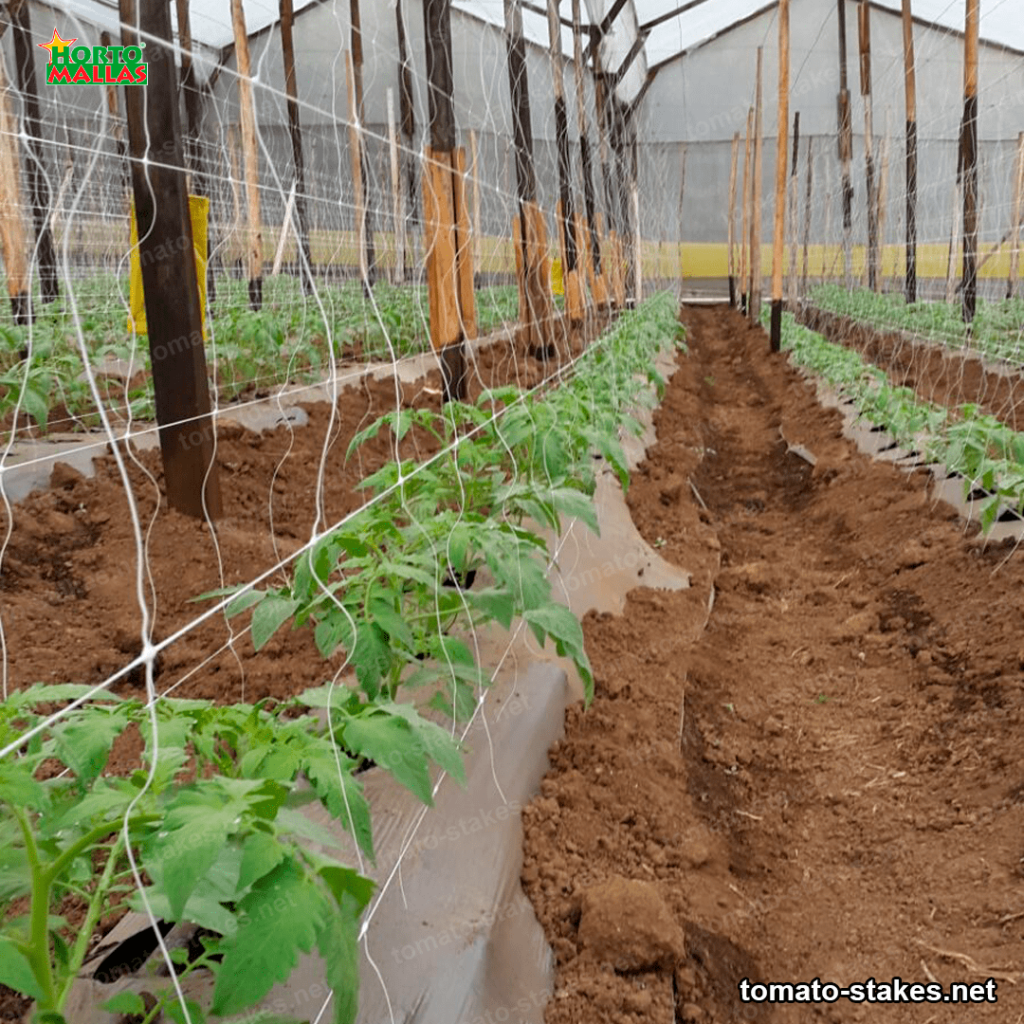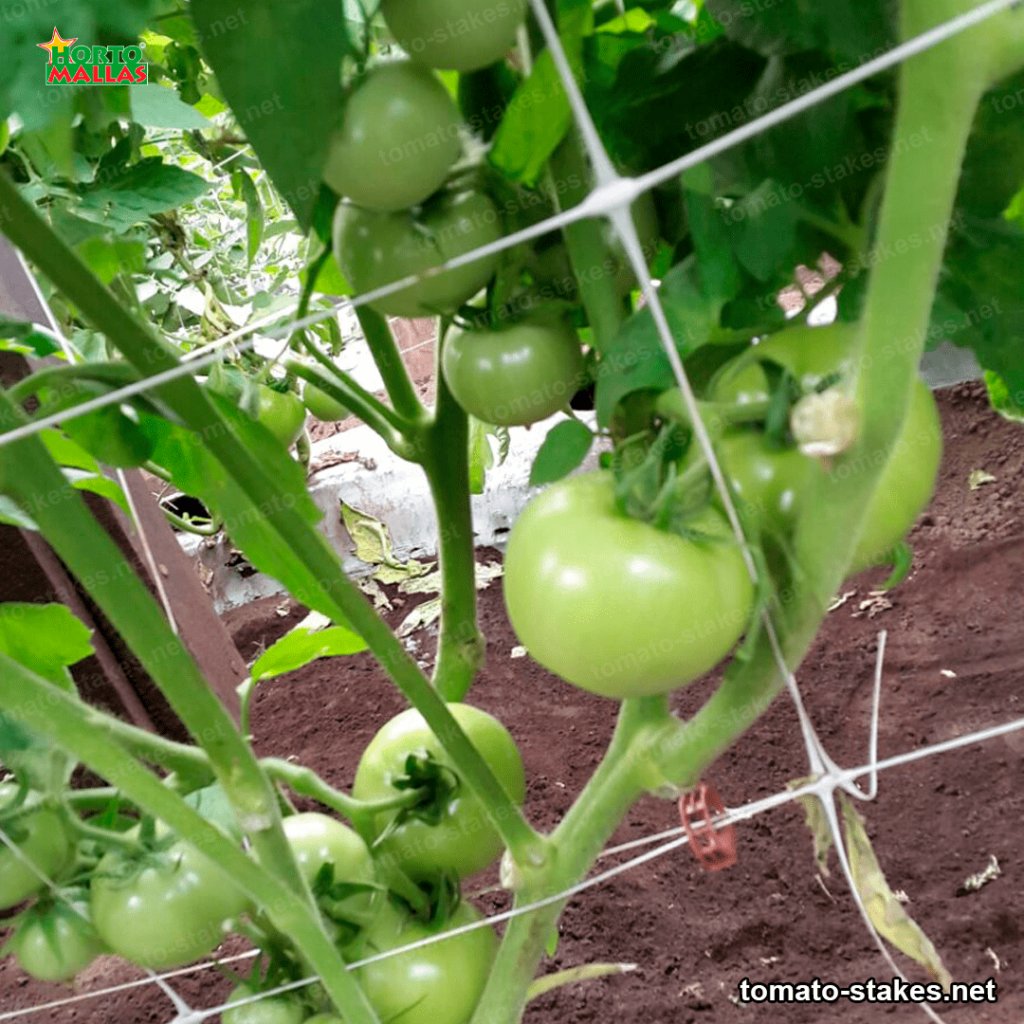The tomato crop stake is a type of physical barrier, designed to deter predatory animals from coming too close to crops. These barriers are usually made of metal, wood or plastic, and are covered with stainless steel wire so that animals cannot bite them. These barriers are placed around the edge of tomato plantings and stacked to a height of about one meter to deter predatory animals.
Physical barriers also cover and protect tomato crop from abundant moisture and can help prevent weeds from overgrowing around the edge of the planting. This barrier can provide the plants with more sunlight as the areas around the planting are protected from weeds. This beneficial feature is closely related to increased production of better quality tomatoes. They can also help prevent diseases and pests. These barriers prevent insects and worms from reaching the plants, thus avoiding damage to the roots or leaves. The barriers also prevent contact with unpleasant odors, dust and dirt from the street, allowing tomato plants to defend against potentially deadly diseases such as tomato fruit fly.
And finally, as a last benefit, using the tomato stake as a physical barrier helps reduce damage caused by predators, whether rodents or wild animals. These barriers prevent predators from having direct access to tomato plantings while maintaining crop health.
Tomato crop staking is a useful tool for protecting tomato crop from predators. It can be used to help prevent diseases and pests, while reducing damage caused by predatory animals. These stakes also offer additional security by harnessing the benefits of sunlight, thus protecting crops from predators at the same time.

Maintenance of tomato stakes for tomato cultivation
The maintenance of tomato stakes is one of the main tasks of the grower. These structures are used to provide support for tomatoes and promote proper growth and fruiting. These structures also have the characteristic of providing a protective air for the crop, thus increasing yields. It is important to keep stakes in good condition for a productive and safe environment.
The first maintenance task regarding tomato stakes is proper installation. This includes preparing the area where the stakes are to be placed, making sure they are properly spaced. These structures must also be properly buried to prevent them from falling over. The stakes can be attached to the posts with chicken wire, chicken wire, chicken wire, rope, synthetic fibers or chains. Once stakes are installed, they need to be checked regularly. This means examining them thoroughly for any damage to the stakes, wires or links. This can be done by hand, with the aid of a magnifying glass or a zoom camera. If problems are detected, they should be addressed immediately to prevent them from worsening.
This product should also be restored once a year, preferably at the beginning of the growing season. This consists of digging up the stakes, cleaning out any soil, moss and weeds that have accumulated and re-digging the stakes. Then, the structure must be adjusted to make sure it stays in place. Depending on the size of the tomatoes, the stake may have to be readjusted to fit the height. In addition to these maintenance tasks, it is also important to make sure the stake is properly protected. This means using a weather-resistant paint to protect the structure from rust, insects and other natural damage.

Secondary uses of tomato cuttings for tomato crop
The secondary uses of these stakes are many and new uses are being discovered every day.
One of the main applications of stakes for tomato cultivation is to resist wind and allow tomato stems to grow straight and strong. Stakes are useful for supporting tomatoes and preventing them from bending or being damaged by the weight of the fruit and the effect of wind. This is ensured by planting the stake near the base of the tomato at planting time.
Another use of stakes for tomato cultivation is to regulate the growth of tomatoes. Stakes are used to braid the tomato stems in order to direct the “vertical growth”, preventing the stem of one tomato from touching the stem of another. This technique is ideal to achieve the correct development of the crop and a correct distribution of the fruit.
In addition to these uses, tomato stakes are also a support medium for fertilizers and pesticides. These stakes allow the chemicals to be hung from the tomato bunch, so that they are at the right level of concentration. This ensures the protection of the crop and its full development.
Another not so well known but equally important use of stakes concerns crop defense. These stakes help prevent the invasion of pests such as aphids and other insects harmful to tomatoes. These stakes are placed around the crop preventing the entry of these pests.
Finally, tomato stakes are also an effective means of regulating sunlight reaching the crop. These stakes create barriers between plants, which means that sunnier areas receive more light. At the same time, these stakes allow those areas with less light to receive enough to achieve a good crop.